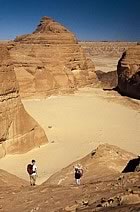See the one about the Jagermeister? I’ve been there. Baby, I’ve been there.
In Toronto, this is also known as David Crow Vision ;).

See the one about the Jagermeister? I’ve been there. Baby, I’ve been there.
In Toronto, this is also known as David Crow Vision ;).

for the Toronto technology scene in 2007. More later.

It is unfortunate that those of us who went to university in the late 80s and early 90s probably know Clarence Carter for that painfully cheesy number, Strokin’, a big hiot at every “meet market” dance club of that era.
Here’s a better one that still has all the dirty-dirty bump ‘n’ grind: Backdoor Santa. Yes, I’m snickering too.
Clarence Carter: Backdoor Santa (2.0 MB MP3)

If you’ve been following the story about the Kims (which I mentioned in the previous entry), there’s a site set up by their friends and family: JamesAndKati.com. It’s got news and updates, as well as a guestbook where you can leave some best wishes and words of support.
One story that will stick with me forever is Jack London’s short story of winter survival, To Build a Fire. It seemed as if it was on the curriculum of every Canadian grade school when I was a young teenager, and I’m sure everyone who’s taken a winter survival course was told to read it as a cautionary tale.

Later, at Crazy Go Nuts University, at the start of COMM 101 — “Intro to Business” — one of the first group exercises we did in the class was to explain how we’d handle a hypothetical situation. The purpose of the exercise was to demonstrate group dynamics and decision-making, and it went like this: We were in a small plane that crashed in the desert somewhere in the southwestern U.S.. The pilot is dead, and we have limited supplies: some water, a knife, a little food, salt tables, a large white parachute and a few other items. There’s nothing but flats as far as the eye can see. What do we do?
I argued for staying with plane, taking shelter, stretching our water supply and making ourselves as findable as possible. Someone else in our group, who’d just seen the movie Alive a few days prior, argued that we’d die if we stayed there. She said that the only way to survive was to make our way towards civilization or a road.
Although the purpose of the exercise was to explain the 90/10 dynamic of groups (generally, a group is 10% alpha dogs — me and the Alive fan — and 90% pack) and other aspects of group decision-making, we were given the correct answer, and that was to stay put and use the parachute as both shielding against the sun and a way of being spotted from the air. Even after the explanation, the Alive fan was unconvinced. “But…Alive…” she said.
One of these days, I’m going to have to rent that movie.

Kati Kim, after being rescued after nine days of being trapped in a car on a mountain in Oregon.
I bring up both these stories because the story of James Kim and his family reminded me of them. If you’re a follower of the tech news or live on the American west coast, you’ve probably heard this news. James Kim, an editor for CNET and familiar face for G4/TechTV viewers, his wife Kati and daughters Penelope and Sabine went missing days ago on a road trip to the Pacific Northwest. Their story, in a nutshell: they took a mountain road that they thought would be a shortcut and ended up getting trapped in very deep snow. They ran the engine to power the heater until it ran out of gas, and then burned the tires. Finally, James set off to get help. Kati and the girls were found alive nine days later and are in good condition. The search for James continues.
I’m very happy that Kati and the kids have been found, and my heart goes out to them. I hope they find James alive and well, and soon.
Back in the fall of 1986 and the winter of 1987, I made the drive between Toronto and Montreal an average of once every three weeks to party with my sister and her friends at McGill (those stories should be blogged someday). The driving, while nowhere nearly as treacherous as the mountain routes taken by the Kim family, could still be pretty bad at times; sometimes, the snowfall and winds would be so bad that we had to pull over and wait. I never let the gas gauge drop significantly below half-full, and I always had an extra sweater, a small shovel, a road safety kit and some Wunderbars handy. The longest I ever had to sit still in a storm was about five hours, after which I had to dig out the car.
As I mentioned earlier, the Kims’ problem is orders of magnitude worse than anything I’ve faced. Highway 401 is not the same thing as the mountain pass they took. Even if I’d run out of gas during a blizzard on the 401, help is never far away from that very well-travelled route.
Here’s a question for the winter survival experts: if in the situation like the Kims (let’s ignore the prevention aspect for the moment), is it better to stay put, or go for help?

Don’t forget, the gathering of Toronto-and-area bloggers takes place this Friday, December 8th at Fiddler’s Green (Wellesley Street, just across the street from the subway station). If you write or read blogs or are even wondering why people write or read blogs, come and join us!
For more details, see:

If you regularly read Robert Scoble’s blog, you’ve probably seen his entry on the traditions surrounding the Dutch version of Santa Claus, Sinterklaas. Here’s a treat for him (and you) — David Sedaris explaining the Sinterklaas tradition, in a spoken-word piece titled Six to Eight Black Men.
David Sedaris: Six to Eight Black Men (7.2 MB MP3)